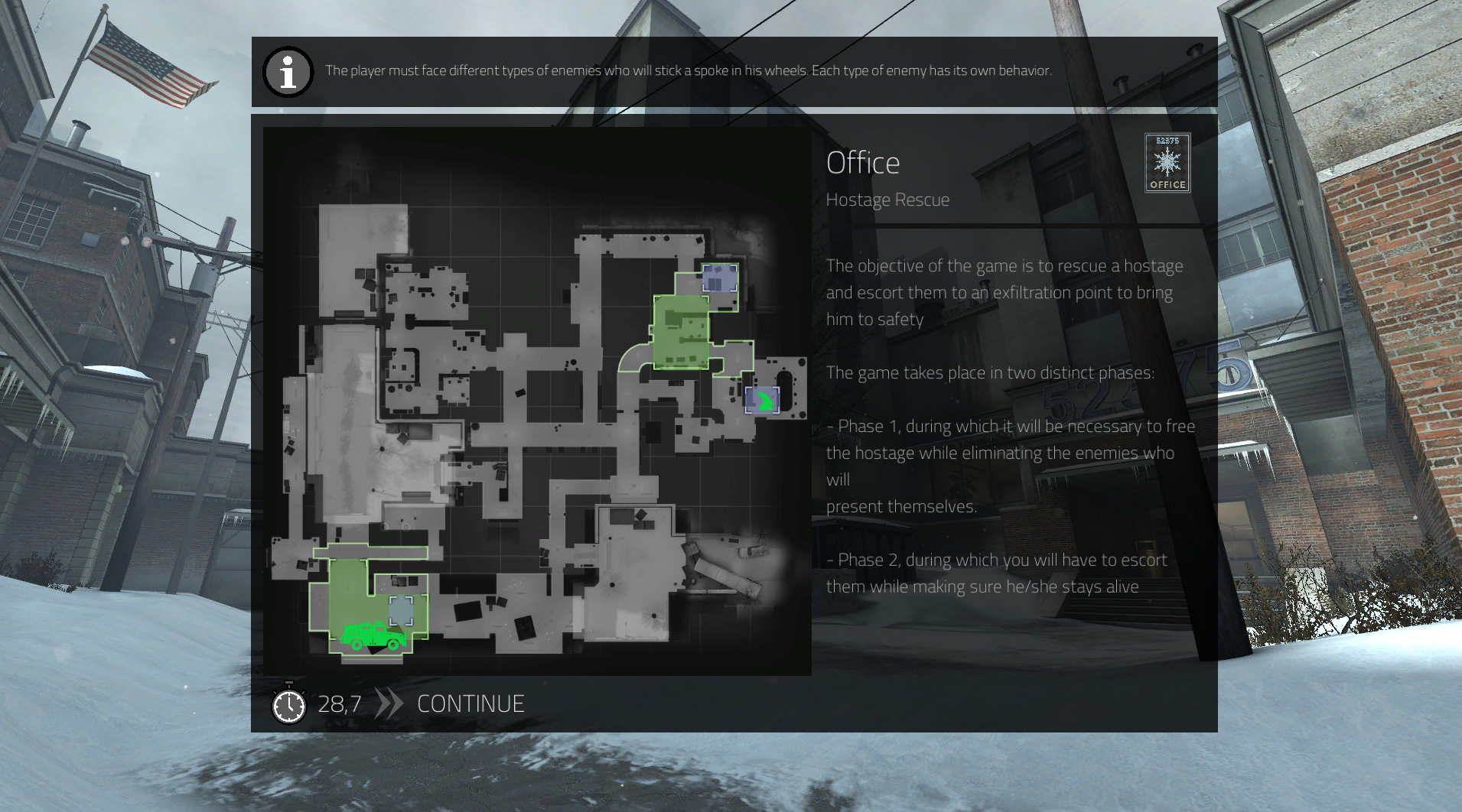Beauty Reports: Trends & Tips
Stay updated with the latest in beauty trends, tips, and product reviews.
Hostage Negotiation: Exploring CSGO's Most Thrilling Maps
Discover CSGO's most adrenaline-pumping maps in our thrilling exploration of hostage negotiations. Dive in for strategies and secrets!
Top 5 CSGO Maps for Hostage Negotiation: Strategies and Tips
In the exciting world of CSGO, hostage negotiation maps present unique challenges and require specialized strategies. Some of the top maps, including Office, Italy, and Agency, offer intricate layouts and cover spots that can drastically influence the flow of the game. Each map has distinct features that players can exploit to negotiate hostage rescues effectively. Here are five maps that stand out for their tactical depth and gameplay dynamics:
- Office: Known for its tight corridors and strategic areas, it allows for both close-quarter combat and stealthy maneuvers.
- Italy: This map is set in a bustling urban environment where players can utilize the high ground to overpower opponents.
- Agency: With its blend of open spaces and closed-off rooms, it offers versatility in both offense and defense.
- Dust2: While primarily known for bomb scenarios, creative hostage negotiations can still thrive here.
- Vertigo: The verticality of this map adds an extra layer of complexity to hostage dynamics.
Mastering each of these maps requires understanding their unique characteristics and implementing effective strategies. Pay attention to team communication, maintain map control, and utilize cover wisely to enhance your chances of success in hostage negotiations. Remember, combining teamwork with an understanding of these top maps will put you a step ahead in your CSGO gameplay.

Counter-Strike is a highly competitive first-person shooter that has captivated gamers around the world. The latest installment, known as CS2, introduces new graphics and gameplay mechanics. To ensure a seamless online experience, it's essential to configure settings like cs2 port forwarding for optimal connectivity.
Understanding Hostage Mechanics: How CSGO Maps Shape Gameplay
In Counter-Strike: Global Offensive (CS:GO), the strategic dynamics of gameplay are heavily influenced by the design of maps, especially in hostage rescue missions. Each map is meticulously crafted to create specific opportunities and challenges, shaping how teams approach the task of rescuing hostages. For example, maps like Office and Italy feature tight corridors and multiple levels, which can heavily favor defending teams. Understanding these hostage mechanics allows players to leverage their environment effectively, employing tactics such as flanking or smoke grenades to create diversions and secure the hostages efficiently.
Moreover, the layout of a map can dictate the pace and flow of a match. Some maps encourage slow, deliberate play, while others promote fast-paced engagements. This can result in varying levels of tension and urgency as teams vie for control. For instance, an open map like Vertigo can lead to long-range engagements, where sniping becomes crucial, while narrower designs may lead to close-quarters combat. Consequently, understanding how map design influences hostage mechanics not only improves gameplay tactics but also enhances team communication and overall performance. Players are encouraged to analyze each map’s unique features to develop effective strategies that align with the mechanics at play.
What Makes CSGO's Hostage Maps Unique? A Deep Dive into Design and Strategy
Counter-Strike: Global Offensive (CSGO) has captivated players with its intense gameplay, especially on hostage maps. What sets these maps apart is their unique blend of strategy and design that continuously challenges players. Unlike typical bomb defusal maps, hostage maps are centered around rescuing hostages, which significantly alters gameplay dynamics. Players must adopt a more tactical approach, focusing on team communication and executing coordinated strategies to either save the hostages or secure their capture. The layout of the maps often includes tight corridors and multiple entry points, creating opportunities for surprise ambushes and tactical flanking maneuvers.
The design of CSGO's hostage maps also fosters a different pacing compared to regular matches. The necessity to protect or rescue hostages means that players cannot rely solely on aggressive tactics. Instead, a balance between offense and defense becomes crucial. Key features such as choke points, cover areas, and verticality encourage varied playstyles, fostering adaptability among players. Ultimately, the unique combination of these elements in hostage maps not only enhances the strategic depth of CSGO but also ensures that each match offers a fresh and engaging experience for players looking to perfect their tactical skills.